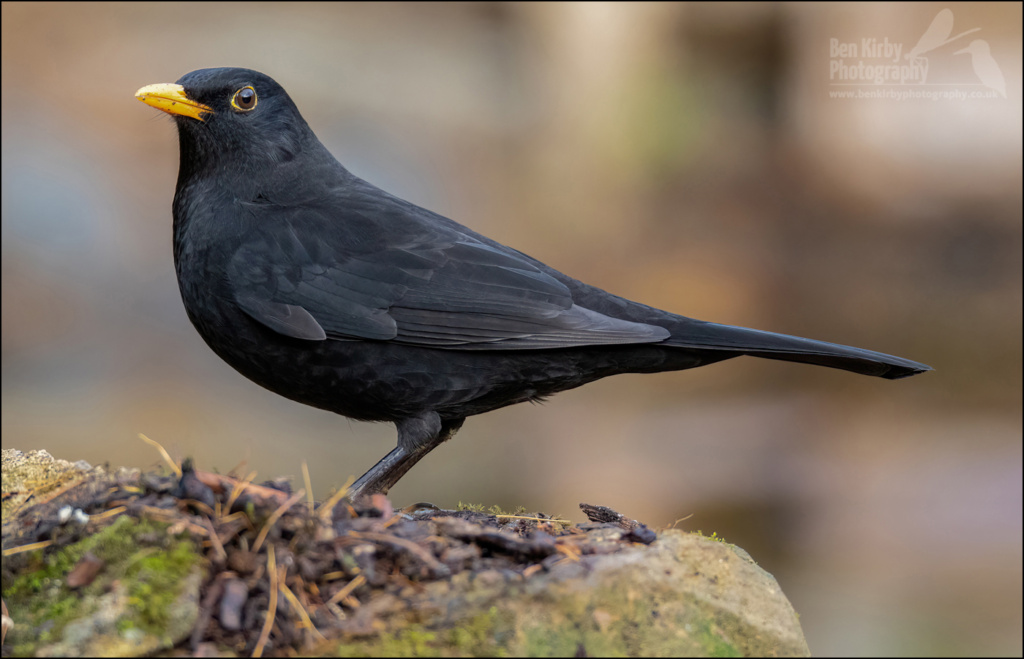Starting us off in January is the Blackbird (Turdus merula)
The male Blackbird is black in colour, with a yellow eye ring and orange-yellow beak.

The female Blackbird is brown with lighter brown streaks on the breast and a yellow-brown bill

Juveniles look similar to a fully grown female, however they have copper streaks.
They mainly eat insects and worms and can bee seen foraging on the ground and in the undergrowth. When there are leaves on the ground you may see the Blackbirds “flipping” them, as they search for food underneath.
Within the reserve they are common and you are likely to see one during your visit. They can sometimes be seen at our bird feeding stations, picking up the spilt seed and food from the feeders.
They are also a garden visitor and may come to inspect any digging you may be carrying out in the garden.
The photo below was taken at my allotment plot, on my mobile phone, whilst I was digging the soil!

Blackbirds normally nest from around March and can have up to three broods a year. The nest is built by the female and made from twigs, grass and other plant materials.
The Blackbird is on the UK green list, meaning its population is currently stable.
Listen out for the rich mellow song in the spring and summer.
If you manage to spot and photograph a Blackbird, within the reserve, why not share it on our Facebook page?




